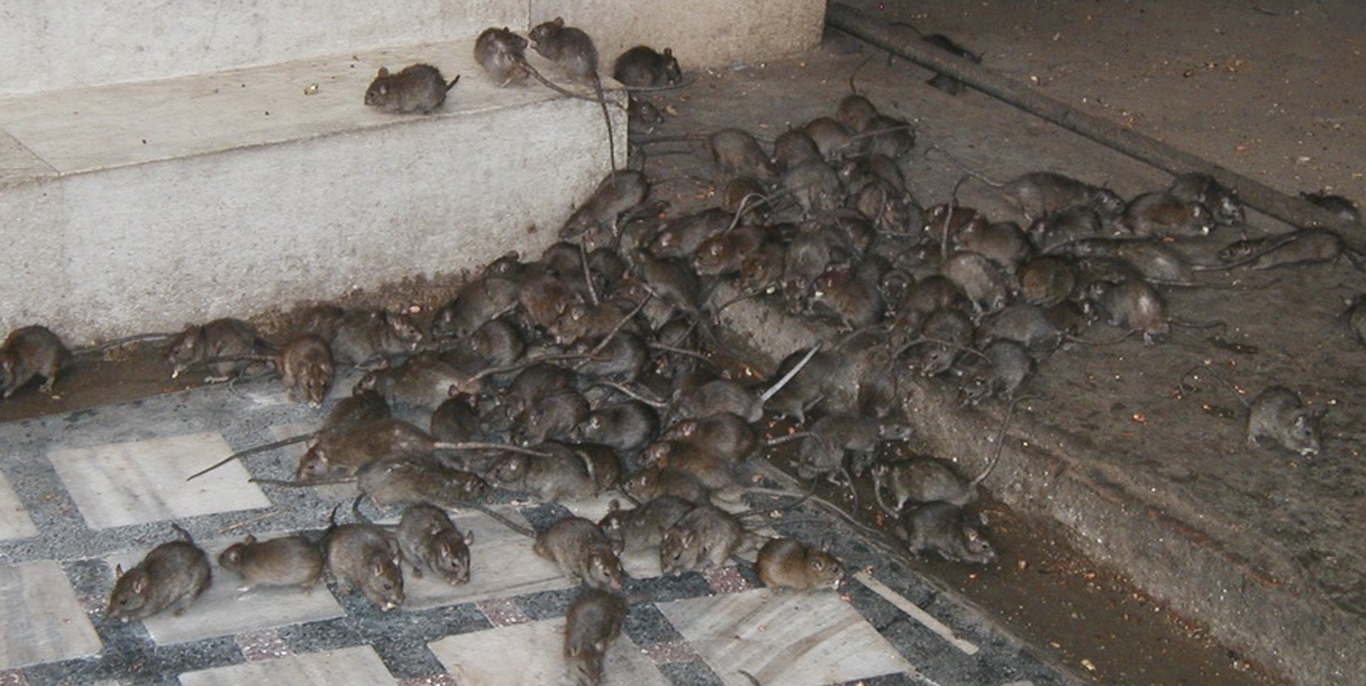Key Traits of Rodent Infestation in the Home

Mouse control is one of the most common services provided by Georgia exterminators (and by exterminators throughout the world, for that matter). People have been trying to keep mice out of their homes and businesses pretty much forever.
In urban areas like Atlanta, mouse control is most in demand in the fall and early winter, when mice and rats start looking for warm, cozy places to spend the winter. In rural Georgia, mouse control is more of a year-round problem. Keeping mice out of stables, barns, silos, and other agricultural buildings can be a real challenge. The common house mouse, Mus musculus, averages about three inches in length (not including the tail) and is usually gray or brown in color, with white or light-colored bellies. They have relatively large and prominent ears, and their tails are usually about the same length as their bodies. Their ears and tails have very little hair.
The house mouse’s skeletal system allows mice to squeeze through very narrow openings: An adult house mouse can squeeze through a crack the width of the thickness of a pencil, or through a hole the size of a dime. This enables mice to travel throughout a home’s structural voids and pipe chases. Mice can be found anywhere in a house from the attic down to the basement or crawl space. But they usually don’t wander very far from their nests and food sources.
Mice have relatively poor vision and tend to navigate by smell and touch. They feel their way along walls and other vertical surfaces and are uncomfortable in open spaces where they are more vulnerable to predators. On the other hand, mice are very curious creatures who readily explore new objects in their environments, including mousetraps. Skilled mouse exterminators sometimes use no bait at all on certain types of mouse traps, relying on the mouse’s natural curiosity instead.
Mice pose a greater public health threat than most people realize. Mice are directly involved in the transmission of a number of serious diseases including Lymphocytic Choriomeningitis Virus, leptospirosis, salmonellosis, and dysentery. They’re also hosts to parasites such as ticks and fleas, which in turn are involved in the transmission of serious diseases including lyme disease, murine typhus, and plague. In addition, because of their small size and inquisitive nature, mice tend to come into closer contact with humans than do their larger cousins, the rats. Mice often get into kitchen cupboards, for example, where they gnaw through food packages to get at the goodies inside, contaminating the food with their saliva, hair, and filth in the process. Mice also get into drawers, closets, and other storage spaces more easily, where they damage and contaminate stored items.
Hole-In-One Pest Solutions emphasizes non-chemical mouse control over the use of rodenticides by using the IPM Approach or Integrated Pest Management. We don’t just remove mice from your home; we use exclusion to keep mice out. In some cases, mice can be eradicated and kept out of your home without using chemicals. In others, some use of rodenticides may be necessary; but exclusion will minimize the need for poisoning. Our non-chemical mouse control program emphasizes habitat modification, trapping, sanitation, sealing, and exclusion as the primary mouse control tools. We use rodenticide baits only when necessary.
This “green” approach to mouse control is more environmentally responsible because it drastically reduces the need for pesticides. It also results in a more permanent mouse control solution because it helps prevent “new” mice from getting into the building after the “old” mice are removed. In the long run, our IPM approach to mouse control is also more economical because it eliminates or dramatically reduces the need for follow-up visits. When mouse exclusion is ignored, a pest control operator has to return to the account month after month simply to check and fill bait stations. Yes, the mice who eat the bait will die (often in inconvenient places where they stink up the house for weeks), but they’ll be replaced by “new” mice who come in from outside. Filling bait stations becomes a never-ending process that the customer keeps paying for, month after month, and year after year. If you’re ready to try a new, more environmentally responsible, and more permanent solution to get rid of mice from your home or business, please contact us for a prompt inspection by one of our experts.
